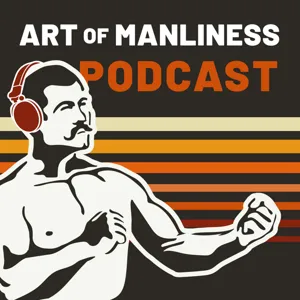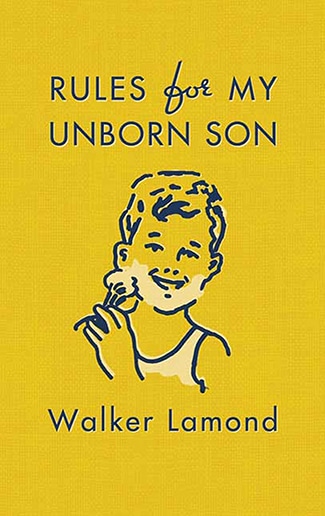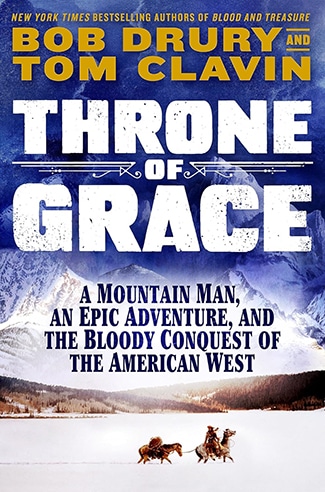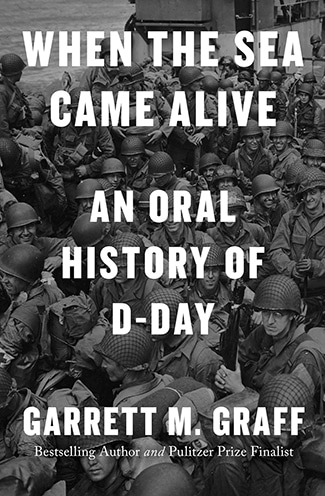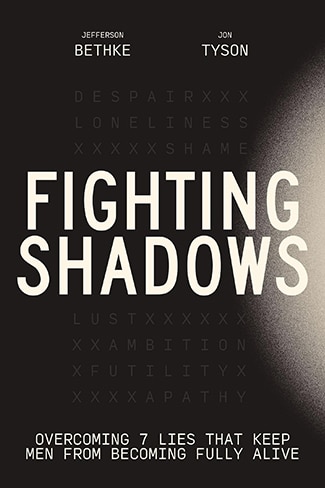Podcast Summary
Understanding When Violence is Necessary: Learn the difference between anti-social aggression and a-social violence, study criminals to effectively use violence, and reconsider the belief that violence is never the answer.
According to Tim Larkin, self-defense expert and author of "When Violence is the Answer," there are situations where violence is the only answer to protect oneself or one's family. Larkin argues that it's important for civilians to change their mindset about violence and learn how to use it effectively. He distinguishes between anti-social aggression and a-social violence and explains how to respond to both. Larkin also emphasizes the importance of studying criminals to learn how to use violence effectively and how this knowledge can make one more peaceful and gentle. The book challenges the common belief that violence is never the answer and encourages readers to reconsider their perspective on the subject.
Focus on avoiding violence, not just self-defense: Self-defense training should prepare for rare violent situations, not common social aggression, and teach recognition and response.
Most people don't want to learn self-defense to engage in violence, but rather to avoid it. Tony Robbins emphasized that people should focus on living a life that minimizes the chances of having to use self-defense. Violence is an unpredictable event, like swimming for your life, and no one wants to experience it again. The difference between aggression and violence lies in communication. While social aggression can often be handled through communication skills, violence is a situation where communication has failed, and you're left with no choice but to defend yourself. The focus of self-defense training should be on preparing for rare violent situations, not social aggression, which is more common but avoidable. Effective self-defense training teaches you to recognize the difference between social aggression and violence and how to respond appropriately when faced with the latter.
Consider violence a last resort: Use violence only when communication fails and imminent danger exists, causing severe injury or death is a serious action.
The use of violence should be considered a last resort when dealing with threatening situations. The threshold for using violence is high and requires imminent danger of death or severe bodily harm, or situations where communication has ceased and the only response is physical action. The human body has vulnerable areas, and causing severe injury or death is a specific and serious action. It's important to understand the difference between situations where communication is possible and those where it has broken down completely. In the latter case, the only effective response is the use of violence, and being prepared for this scenario is crucial.
Understanding Physiological Responses to Violence and Recognizing Subtle Signs of Social Aggression: Recognizing subtle signs of social aggression and understanding physiological responses to violence are essential skills for self-preservation. Self-defense training teaches techniques to bypass an attacker's conscious mind and inflict injury, while observing real-life violence can help prepare for such situations.
Our bodies have natural reflexes to protect us from harm, but in certain situations, these reflexes can be used to incapacitate others. This concept is utilized in self-defense training, where the goal is to bypass an attacker's conscious mind and inflict injury. Social aggression, on the other hand, refers to non-verbal threats or intimidation. In a violent encounter, these situations often lack verbal communication and can be characterized by quick, intentional actions. Observing videos or films of real-life social violence can help individuals recognize the subtle signs and prepare for such situations. Overall, understanding the physiological responses to violence and recognizing the subtle cues in social aggression can be crucial for self-preservation.
Identify with the winning side in acts of violence: Shifting perspective to identify with the victor in violent situations can train your brain to seek opportunities to inflict injury and improve upon successful uses of violence
When observing acts of violence, it's crucial to identify with the winning side instead of empathizing with the victim. This perspective shift can help train your brain to look for opportunities to inflict injury and improve upon successful uses of violence, rather than focusing on how to defend against it. Alpha predators, even the worst in prison systems, follow this mentality, always identifying with the winning side and critiquing their methods for even greater success. By watching acts of violence from the successful side, you're essentially programming your brain to only consider inflicting injury on others as an option.
Learning from Criminal Organizations for Self-Defense: Understanding anatomy and violence techniques can enhance self-defense skills. Focus on similarities with attackers and be prepared to protect yourself and community.
Understanding the principles and techniques of violence, as disturbing as it may be, can be crucial for self-defense and protection. The Mexican Mafia, a notorious criminal organization, recognizes this and educates its members extensively on anatomy and the use of violence as a tool for power and control. While it's important to remember that promoting or glorifying criminal behavior is not the intention, learning from their methods can help us better understand the importance of knowledge in self-defense. By focusing on similarities and vulnerabilities instead of differences between attackers and ourselves, we can increase our chances of survival and make violence a universally available skill. Ultimately, being informed and prepared is key to protecting ourselves and our communities.
Prisoners' Methodical Approach to Violence: Understanding the importance of targeting vital areas in self-defense, a lesson learned from prisoners' direct and efficient approach to causing harm.
Prisoners approach violence with a methodical and direct mindset, focusing on efficiency and effectiveness in causing harm. They prioritize specific targets on the human body and create weapons accordingly. This contrasts with our indirect and sanitized approach to self-defense, often learned from sport martial arts. Combat sports, while pitting skills against skills, have rules that limit injury to the human body, making it essential to understand their rules to learn effective self-defense strategies. Prisoners understand the importance of targeting the body's vital areas to disable opponents quickly, a crucial lesson for those seeking to defend themselves in life-threatening situations.
Considering the Potential Consequences of Self-Defense Situations: Think through potential outcomes before engaging in physical confrontations, use force as a last resort, understand the difference between violence and self-defense, and avoid confusing the two to prevent unnecessary harm and legal issues.
Self-defense situations can escalate quickly and result in severe consequences, even if neither party intended for violence to occur. It's crucial to consider the potential outcomes of our actions before engaging in physical confrontations. The use of force should be a last resort when we have no other options. The scenarios discussed, such as social aggression in a bar or parking lot, can potentially lead to criminal charges if the situation gets out of hand. The book mentioned in the podcast aims to help individuals think through these situations ahead of time and consider the long-term consequences of their actions. It's essential for men, in particular, to be mindful of their relationship with violence and avoid confusing it with locker room culture or self-defense. Ultimately, deliberate thinking and understanding the difference between violence and self-defense can help prevent unnecessary harm and legal issues.
Understanding the gravity of violent situations: Recognizing potential consequences of violence can help individuals make informed decisions and avoid unnecessary harm
While anger management classes and social interaction skills can help prevent violent situations, it's crucial to understand the specific circumstances that may warrant violence. Knowing how to inflict violence can actually make a person more confident and calm in aggressive situations, but the realization of the potential consequences can be a powerful deterrent. A personal story from UFC champion Bas Rutten illustrates this, as he shared an experience where he regretted engaging in a fight that could have been avoided. Similarly, my own experiences have taught me the importance of assessing the value of responding to provocation. Ultimately, understanding the gravity of violent situations and the potential for unintended consequences can help individuals make more informed decisions and avoid unnecessary harm.
Importance of self-defense education: Everyone should be prepared and educated in self-defense, as violence is a simple skill set that requires intent and knowledge, not heroics.
Everyone should have a working knowledge of how to defend themselves in dangerous situations. The speaker shares a personal experience where he mistakenly believed he was being threatened with a gun, only to discover it was a club. He was about to react violently until he saw a young girl in the car, preventing him from causing harm. This incident made him realize the importance of education and training in dealing with violence. The speaker emphasizes that violence is a simple skill set that requires intent and knowledge, not heroic coordination. He also mentions the importance of understanding anatomy and physiology to effectively defend oneself. The speaker praises the simplicity of the Target Focus Training method, which highlights specific body parts that, when hit hard enough, can cause spinal reflexes and disable an attacker. Overall, the key takeaway is that everyone should be prepared and educated in self-defense, as violence can be a simple and straightforward tool that requires intent and knowledge.
Understanding injury thresholds from sports data: Understanding injury thresholds can make us more effective in physical combat, despite the lack of rewards and social validation compared to sports or combat training.
Our understanding of human injury and the role of the brain in physical combat comes primarily from sports injury data. The human body has specific injury thresholds, and understanding these areas can make us more effective. A personal anecdote illustrates this - a Navy officer, at the peak of his physical abilities, suffered a seemingly minor injury that ended his career in special forces. This experience showed him that physical strength alone is not enough, and that injury can occur despite one's will and desire. The use of violence, while necessary in certain situations, lacks the rewards and social validation found in sports or combat training. However, understanding the human body's response to injury and training the brain to access violent responses effectively can make us more competent and calmer in life.
Understanding violence dynamics and prioritizing social interaction: Adopting a mindset that prioritizes social interaction over aggression can lead to more peaceful outcomes. Be polite and engage in social communication to de-escalate situations.
Understanding the dynamics of violence and adopting a mindset that prioritizes social interaction over aggression can lead to more peaceful outcomes. The speaker, who has experience in self-defense, emphasizes the importance of not triggering unnecessary violence and instead treating every interaction as a potential threat. He suggests being polite and engaging in social communication as effective ways to de-escalate situations. The book "When Violence is the Answer" aims to change the public's perspective on violence by providing a deeper understanding of its complexities. To learn more about the book and the author's work, visit targetfocustraining.com and preorder the book for access to a free 10-week course. The speaker encourages readers to explore the topic of violence in a thoughtful manner to better navigate news reports and real-life situations.
Exploring Violence Through Books and Real-Life Experiences: Studying violence through various means, including books and real-life experiences, can help us understand its causes and effects, and prepare us for handling violent encounters. Larkin's upcoming book, 'When Violence is the Answer,' offers valuable insights on this topic. Stay informed and stay prepared.
Larkin emphasizes the importance of studying violence through various means, including books and real-life experiences. His upcoming book, "When Violence is the Answer," offers valuable insights on this topic and will be available for preorder on Amazon.com starting September 5th. For more resources on this subject, visit AOM.IS/violence. Remember, being prepared and knowledgeable can make a significant difference in handling violent encounters. So, take the time to learn and stay informed. And, if you've enjoyed this podcast, please consider leaving a review on iTunes or Stitcher to help spread the word. Stay Manly!

